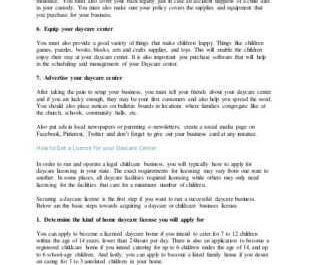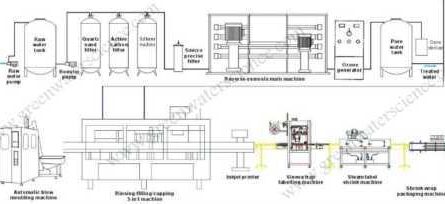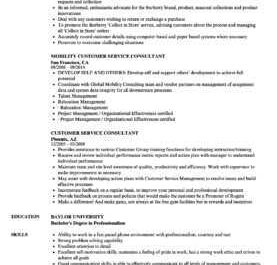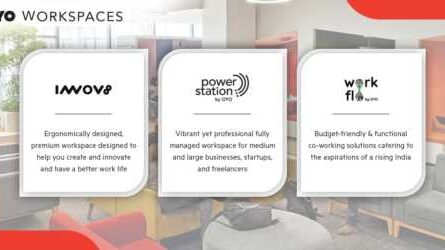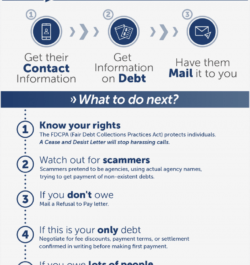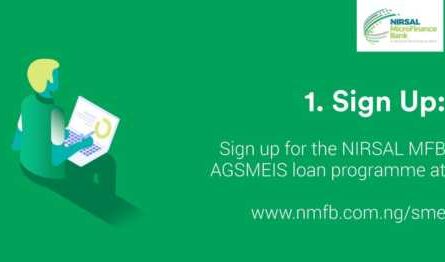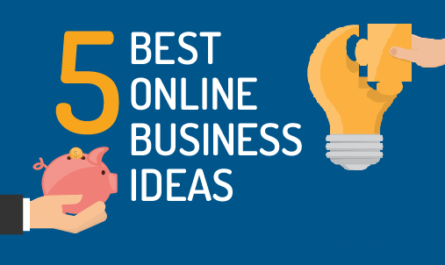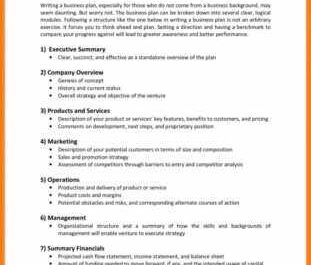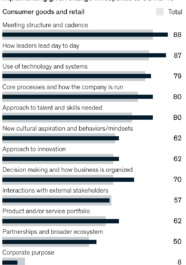Want to open 401K to your employees, but no secret? here are 7 easy steps to start a 401K plan for your small business.
If you’re a small business owner in the United States, there’s a good chance you’ve heard of the 401 (k) plan. But do you really understand what it means and why it matters? Do you know how to get started with a plan, even if you understand how useful it can be ?
If your answers to these questions are no, then this article is for you as it explains the basics you need to know about 401 (k) plans, their importance, and how to get started.
What is a 401 (k) plan?
A 401 (k) plan is an employer-funded retirement option that allows workers to deposit regulated funds into their retirement account. This contribution reduces the worker’s fiscal responsibility, thus saving them the days when they can no longer earn income. When an employee reaches a certain legal age, he receives the contributions he has made to his accounts.
Rather than offering pension plans that provide retirees with a fixed monthly income, many companies have opted for defined contribution plans, such as 401 (k) plans, which require employees to invest their own salary sometimes equal to that of the employer.
Employers typically receive tax credits for employee matching contributions, which means they make certain contributions to their employee 401k accounts. Compliance is also a good incentive for workers to participate in the plan, and therefore, workers are more likely to participate in the plan when the employer matches contributions.
In fact, setting up a retirement plan can be easier and more affordable than most employers realize, as many plans do not have an upfront setup or maintenance fee. Plus, you can get tax breaks and other benefits for starting a retirement plan.
For example, any expenses you incur during setup may be eligible for tax credits, and once your plan is operational, employer contributions on behalf of workers are tax deductible.
It’s a fact that many employers already provide 401 (k) plans to their teams. The Society for Human Resource Management (SHRM) found that 94% of companies offered some type of pension plan in 2016. Additionally, 74% of companies reported a match for all or part of their employees’ contributions to these plans. . If others are doing it, so can you. Here’s how you can get started.
Why is 401 (k) important?
The 401 (k) plan helps create a simple, tax-efficient way to save money in retirement. So, by putting 401 (k) plans in place for your employees, you are sending signals that you really care about them and what happens to them when they retire. This will motivate your employees to become more engaged and contribute more to the growth and success of your business.
So when you put in place a 401 (k) plan for your employees, you are directly helping them plan. a happy retirement and indirectly contributing to the growth of your own business.
Plus, offering a 401 (k) pension plan to your employees is a smart way to create a professional playing field between your small business and larger businesses in your industry and beyond.
Beyond the previously mentioned benefits of motivating your employees, a good retirement plan can help you attract talented people in today’s tough job market ( as they will only be looking for jobs at companies that have long-term projects for them).
Another benefit of a 401 (k) plan is that it can help you take advantage of certain tax benefits that may be available to you as the employer offering the plan. So your employees are not the only direct beneficiaries; You will benefit too.
Factors to help you decide which plan is right for your business
- Number of employees you have
Your employees are the first thing to watch out for when considering getting 401KB because the number of your employees will influence what type of plan you choose. to have. If you don’t have any employees other than you, your spouse, or your business partner, and you want the highest possible contribution limit, consider the 401 (k) Self-Employed Option.
If you plan to hire employees in the future, or if you already have employees, you may need to choose between SEP IRA and SIMPLE IRA, which can cover employees.
You will then need to decide whether you want to fund your employees’ accounts (SEP) yourself or whether you want your employees to make deposits (SIMPLY). Analyzing all of this data correctly will tell you what is the best plan for your business.
- How can you contribute
Having looked at your staff, now you need to think about how much flexibility you want in terms of contribution limits and to whom you want to make such contributions.
The 401 (k) Self-Employed Plan offers the highest possible contribution because it recognizes that self-employed people can be both an employee and an employer. In fact, as an employee, you can make optional deferrals of up to $ 18,500 for 2021.
As an employer, you can contribute up to 25% of the compensation to profit sharing, up to a maximum of $ 55,000 for 2021. If your business is not registered, you can deduct contributions for yourself- even from your personal income. If your business is registered, the company can usually deduct the costs as a business expense.
How many employees you have or not will affect the plan you choose. If you have a variable income business and want more flexibility, you may want to consider a SEP IRA. Remember that if you have employees in the years in which you contribute, you must contribute for them at the same percentage as for yourself.
On the flip side, if you want your employees to help fund their retirement account, you might consider a SINGLE IRA available for companies with up to 100 employees.
- Convenience of use
as a small business, you should never choose a 401k plan that’s too complicated for you. Look for a simple, straightforward plan that makes it easy to change and keep track of your employees’ accounts. The goal is to encourage employees to contribute to their 401 (K), not to push them away because the experience is confusing. Again, if you get a plan that’s too difficult for you, you risk failing your annual tests.
What you need to know before planning to set up a 401k plan for your business
It is a fact that many companies outsource the creation of their 401k plans. This is not in itself a bad thing, and while you have also decided to outsource your work, there are some things you still need to know before embarking on this journey. They include:
- Find out how 401k will benefit your business
Businesses install 401k for a variety of reasons and you need to know why your business needs one of these plans. If you don’t, you won’t maximize the opportunities it presents. If you need your 401k to be a tool to help you compete in the market, develop a plan to make sure your employees are rewarded.
If you need it as a retention tool, put in place precautions and incentives that keep employees with the company and on schedule. If you want to use it as an executive compensation tool, make your contributions to the business so that it legally enters into management. You should also research the demographics of your employees before developing a plan so that you don’t waste your time.
- The plan includes fees
Setting up a 401K plan comes at a cost, especially if you are a small business owner. If you fall into this category, you need to budget between $ 1,500 and $ 3,000 to get 401 (k) and make money. In some cases, it may even exceed this amount, or even less.
Some of the fees that typically reach this amount include; administration fees, investment fees (which are deducted from the return on investment) and maybe even the individual service fees that each plan member must pay. You will receive information about these charges as soon as you request it. Some companies may be able to waive the fee, but this is usually reserved for large companies.
- 401k has different types
There are many different types of 401k, but most employers offer either the traditional 401 (k) plan or the 401 (k) Safe Harbor plan. In the traditional plan, you pay a percentage of the income to each employee or match the amount your employees choose to deposit into their account.
You can even do both. Obviously, you must comply with the restrictions imposed by applicable tax laws: $ 16,500 for those under 50, and those over 50 are allowed to pay up to $ 20,000 per year. The maximum total amount you and your employee can contribute is $ 49,000.
The Safe Harbor plan is very similar to the one above, but mandatory employer contributions must be paid in full when paid.
- You will need to be tested every year
For traditional 401 (k) plans, there is an annual test that ensures every employee can get the 401 (k) they deserve. An employee earning $ 110,000 or more per year is considered a high-paid worker (HCE) and employers are required to verify that the benefits of the plan are not one-sided in favor of HCEs over non-high-paid employees (NHCE ).
There are two tests to measure this: the Percentage Effective Carryover (ADP) test and the Percentage Actual Contribution (PCA) test. If these tests fail, the 401 (k) may lose its tax status and all contributions and income must be distributed among all. plan participants. If this happens, you might not mind the bottom half of paid employees, but it will affect your highest paid employees.
How to start a 401K plan for your small business in 7 steps
A 401 (K) plan for your business isn’t as difficult as you might think. In fact, it’s never been easier for a small business owner to buy a plan and get started. Here are the steps needed to create a 401 (k) plan for your business:
- Decide whether you want to receive professional help or not
One of the first decisions you need to make when starting this type of project is whether you are going to make the plan yourself or hire a professional to help you get started with the plan. Of course, making a plan and keeping it will pay off, but it may take longer.
Most small business owners find the services easier and cheaper to use. external professional. A specialist who can help you in this area could be a third-party administrator, a mutual fund provider, or an insurance company.
If you are a small business owner, the best option for you is probably a third party administrator, this may be the best option for you as your small business may not get as much attention from a department that typically works with medium to large businesses and enterprises. Employers who choose to use a third-party administrator can choose investment options.
If you are a mid-sized business owner, your best bet is a mutual fund provider. These providers have several different plans that you can use. They also have fairly low start-up costs and annual maintenance costs for their basic 401 (k) pension plans. While mutual fund providers are great for mid-sized businesses, they’re not the best choice if you’re looking for a more complex plan.
If you are a large business owner, the best option for you is to be an insurance company. These companies are best suited to administer complex pension plans. Insurance companies will offer you a variety of investment options, including mutual fund options, if you are looking for higher growth requirements.
However, these plans can be expensive to start. It won’t be a problem for your business if it is a large income generating business. That is why it is more suitable for large companies than for small companies which do not make huge profits.
2. Determine the plan that’s right for you
There are three types of 401 (k) plans:
- Safe Harbor 401 (k) plan
- Traditional 401 (k) plan
- Simple 401 (k) plan
- 401 (k) profit distribution plan
<strong> me. Safe Harbor 401 (k). This type of plan is very similar to the traditional type of plan. The only difference is that employers are required to make contributions to their employees’ 401,000 accounts. By committing to these contributions, the scheme can bypass the non-discrimination test. Businesses of all sizes can offer a Safe Harbor plan.
The Safe Harbor plan, which is the most popular choice for small businesses with few employees, allows business owners to pay the maximum amount of deferral allowed in exchange for appropriate contributions to their employee accounts.
ii. Traditional 401 (k) . In this type of scheme, employers of small businesses have the possibility of choosing between no contributions for their employees on 401,000 accounts, the payment of certain contributions or the selection of part of the employees’ salaries. postponement.
The employer can also set these costs with a transition period to ensure that staff turnover is reduced. Employees can contribute through payroll deductions. Non-discrimination tests are usually done every year to make sure business owners are on their side of the deal.
The traditional plan allows business owners to customize their plan. Business owners have more options for employer contributions, eligibility scales, and even choices that shouldn’t be the same at all.
iii. SIMPLE 401 (k) . SIMPLE is actually an acronym for Employee Incentive Matching Plan. The simple plan is best for businesses with no more than 100 employees. As with Safe Harbor, SIMPLE plans require employers to make contributions to their members’ 401 (k) accounts, which are immediately transferable. SIMPLE plans are also exempt from non-discrimination testing.
iv. Profit incentive plans are preferred by partner companies such as law firms, which reward employees based on the groups they belong to ( e.g. partners, lawyers, and employees ). There is also a less common 401 (k) custom plan for self-employed small business owners.
3. Select a provider and buy your package
There are many questions you should ask yourself about each provider before deciding whether to choose one or not. Did the vendor make the process of purchasing a 401 (k) plan easy or difficult? Does the plan meet the basic needs of your employees? Can a supplier manage your company’s investment list? Will your employees’ compensation be kept below 1% ? Only select a supplier who answers yes to these questions.
4 Write your plan in a document
Once you have decided on the type of plan, you need to create a written document that will serve as the basis for managing your business operations. Unless you hire a professional or financial institution to build and maintain your 401 (k), you will need to draw up a written plan yourself.
If a professional or financial institution processes a plan for you, they will write a written plan. The written plan should include all of the conditions of your 401 (k) plan. This is a legally binding document, so you can seek professional help.
Your document should list the 401 (k) plan that you have chosen and the features that you want the plan to use. have (i.e. the right to receive an employee and the amount of contributions). Likewise, you should detail the process of depositing and distributing funds.
5. Determine what percentage of the salary will be withheld
You and your employees will be able to choose the percentage of salary that will be charged on each salary. Most experts recommend 10% of your salary as a good starting point.
6. Create a trust fund for your plan assets.
The purpose of setting up a 401k plan is to collect contributions on behalf of your employees, and all such employee and employer contributions should be kept in a safe place with a custodian and monitored by a trustee. When creating a trust, you must choose a trustee.
This ensures that the funds are only used by the participants and their beneficiaries. Choosing a trustee is an important part of developing a plan as they must manage contributions, investments and allowances.
7. Establish a record keeping system
You need to find a way to keep track of employee and employer contributions, income and losses, plan investments, expenses and distribution. If you refer the plan to a professional or financial institution, that institution will keep records on your behalf. If you are doing this yourself, you may want to consider using payroll or SaaS software. Your accounting system is essential for preparing the annual reports that you need to do.
8. Inform your staff of the plan in the field
As soon as you receive it. In order to create a plan and decide how to administer it, you need to educate the relevant staff about their capabilities and also tell them how much money they might need in retirement.
Prepare a plan summary (SPD) for distribution to the appropriate personnel in the 401 (k) plan. This lets qualified employees know what to expect from the plan. The SPD must have information about the employee’s eligibility, contributions upon transfer, assignment, claims, and employee rights and obligations.
9 Start enjoying the benefits
While the main benefits of starting a 401 (k) plan are long term, there are short term benefits to your business, such as annual tax credits and deductions.
How to maintain a 401 (k) plan for your business
Choosing a 401k plan for your small business and setting it up to use is just the start. In order for your plan to continue to serve you and your people, there are some things you need to consider.
Depending on the type of 401 (k) plan you choose, you will need to do non-discrimination testing, make employer contributions, communicate plan information, and monitor payroll. Otherwise, you could incur a fine for yourself.
- Your plan should be tested annually
If you have a traditional 401 (k) plan, it should go through an annual 401 (k) test to make sure all employees benefit, not just highly paid employees.
There are two types of tests you need to run: Percentage Actual Carryover (ADP) and Actual Contribution Test (PCA). These tests compare the deferred compensation of well-paid employees to that of low-paid employees. Non-discriminatory testing is mainly used to monitor employers. If you fail this test more than once, you will incur penalties yourself.
- You need to transfer contributions
Since you are deducting 401k from your paycheck, you are required to make employer contributions if you have a safe haven or SIMPLE 401 (k) plan. Be aware that there may be 401 (k) late penalties, so you need to make sure your deposits are always up to date.
- Publish reports
For most 401 (k) plans, you will need to file a Form 5500, Employee Benefit Plan Annual Report (Form 5500-SF or Form 5500-EZ, if applicable). This annual report is prepared electronically.
You should also distribute these reports to members. Remember to provide a Material Change Summary (SMM) when your employees make changes to their information. You should also distribute an Individual Benefits Report (IBS) to show participants their overall benefits. Another thing you should do here is circulate the Consolidated Annual Report (SAR) when filing Form 5500 so members know that you have reported to the IRS and that your setup is legal.
- Pay attention to your fees and duties
Keep in mind that the price you pay for a 401 (k) plan isn’t just about personalization. Typically, you are looking to pay the administration fees, investment fees, and individual service fees of the plan.
Record keeping costs typically range from 0 25% to 1% of plan money, and investment management costs vary depending on the manager and investment choice. Add that and the costs can easily reach 3%. Additionally, any plan with more than 100 members needs to be audited annually, which can add value.
There are also plans that charge a flat fee, like Online 401 (k) has plans for small businesses (up to 100 employees) that start at around $ 1,200 per year, plus a monthly fee of $ 4 per employee.
Again, if a plan provider outsources many key functions including compliance, record keeping, and investment advice, you could end up paying a lot of hidden fees. Look for a plan that does this in-house – and at least make sure you understand all of the fees involved. Find out about setup fees, monthly fees, annual fees, 5500 fees, and whether the provider expects you to pay someone else.


